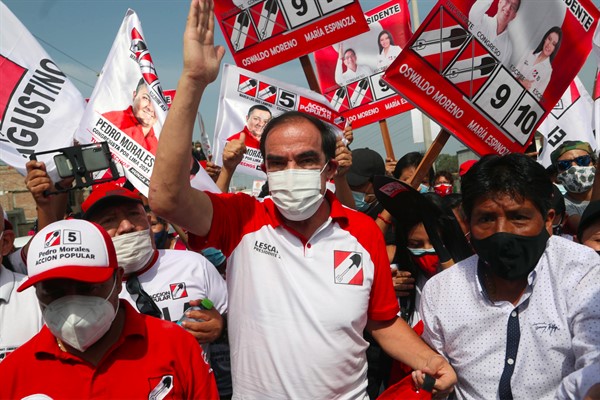LIMA, Peru—In a country long plagued by political malfeasance, jaded Peruvians like to say that they usually cast their ballot for the “least bad” candidate. Now, as Peru staggers toward an April 11 general election, voters—battered by the COVID-19 pandemic, economic collapse and five years of political turmoil—seem unable to decide which of the 18 largely unconvincing presidential candidates that might be.
Yonhy Lescano, the center-left frontrunner, barely breaks into double digits in opinion polls, while the leading five candidates’ combined support does not hit 50 percent. These are unprecedentedly low numbers, even for a society that has long viewed the entire political class with deep disdain. Even with Peru’s compulsory voting requirement, undecided voters and those who say they will spoil their ballots or not show up are by far the largest single voting group, making up 27 percent of the electorate.
That likely spells trouble for the eventual winner—and Peruvian governance in general—who, once he or she is sworn in on July 28, will urgently need to build the legitimacy and support that has so far eluded all the candidates on the campaign trail.

